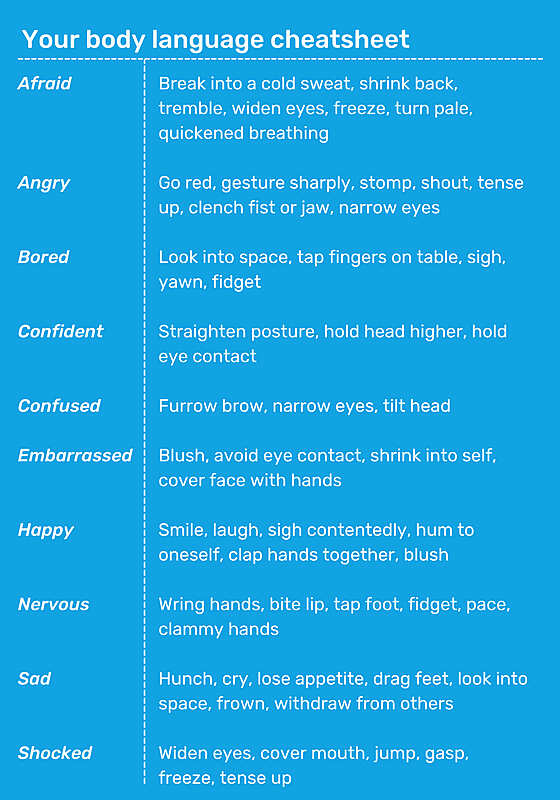
Lesson #5: Body Language Speaks Volumes

Hello again! 👋It’s Arielle from back in Lesson #1
Whether the main characters in your story are people, animals, robots, or plants, it’s vital that your readers relate to them on some level. If we’re not invested in the characters, what’s to keep us reading on to find out what happens to them? Even in the most action-packed novels, twists and turns will fall slack if readers aren’t invested in the outcome of your characters.
One engaging way to establish that all-important reader-character connection is to indicate their feelings through body language. Instead of relying solely on “emotion words” (like sad, happy, or angry), use their physicality to bring their experiences to life.
The body never lies
The Nest by Cynthia D’Aprix Sweeney is a character-driven novel about the dysfunctional Plumb family. Consider the following examples, where Sweeney manages to convey different things about her characters through body language.
Bea suppressed the urge to roll her eyes.
➡️ Instead of: Bea was annoyed.
“That’s very funny,” Jack said, without smiling.
➡️ Instead of: “That’s very funny,” Jack said sarcastically.
I wish I had the money sitting somewhere and could write you all a check,” Leo said. He placed his palms flat on the table and leaned forward, looking each one of them in the eye.
➡️ Instead of: “I wish I had the money sitting somewhere and could write you all a check,” Leo said, hoping his family trusted him.
To get into the habit of using body language to convey emotion, write a list of feelings and the various ways in which they might physically manifest themselves. Here’s a brief list to get you started!

While authors will often show and tell when it comes to body language (such as “Her eyes widened in shock”), try to let the physical expressions of your characters stand on their own as much as you can. By doing so, you will guide readers’ inferences, while also giving them room to interpret your characters in their own ways. Remember, showing illustrates, while telling jumps straight to the facts.
Writing exercise
Today’s bit of homework is all about subtext through body language!
Write a basic conversation between two characters — such as a character asking someone about their day at work, or two people deciding what to cook for dinner. Instead of focusing on dialogue to reveal the characters’ emotions or feelings, tell the story via body language. Are the characters flirting? Is there frostiness between them? Is one of them on the verge of tears or hiding something from the other? Use body language to layer in this subtext.
Until next time!
Arielle
Recommended Resources
- 8 Character Development Exercises to Nail Your Character (blog)
- How to Write a Compelling Character Arc (blog)
Brought to you by Reedsy
Reedsy is a publishing network that connects writers with the world's best editorial and book design talent. As part of our mission to help authors bring their stories to life, we offer over 50 free writing courses and a premium three-month course on How to Write a Novel.

|
|||
|
Top publishing professionals can help make your writing dreams a reality. Sign up to meet them. |

|
Copyright © 2025 Reedsy, All rights reserved.